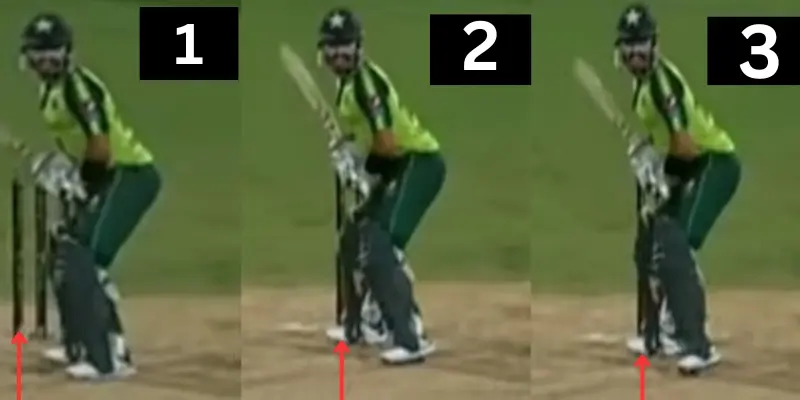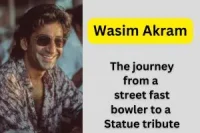Do Trigger Movements in Cricket Really Matter?
Published: 27 Jan 2025
A fraction of a second can decide the results when you are into a game like cricket. whether a batter plays a perfect cover drive or gets bowled. One key technique that helps batters prepare for deliveries is trigger movement. It’s a small, controlled movement just before the ball is bowled, helping the batter get into a stable position for the shot. Let’s explore why trigger movements matter and how they can improve a batter’s game.
What is a Trigger Movement?
Trigger movement is a pre-delivery movement a batter makes before the bowler releases the ball. It is not a big step but a slight adjustment that helps in balance, reaction time, and shot execution. Every batter has a different trigger movement depending on their playing style, the bowler they are facing, and the pitch conditions.
Many great batters, like Steve Smith and Joe Root, use trigger movements to get into the right position early, ensuring they react well to the ball’s pace and movement.

Why is Trigger Movement Important?
A good trigger movement helps in several ways:
Better Balance: It keeps the batter stable, making it easier to play shots.
Quicker Reaction: Helps in adjusting to pace and swing, reducing the chance of getting beaten.
Improved Shot Selection: Allows better control while deciding whether to attack or defend.
Without proper trigger movements, a batter may feel stuck at the crease, leading to mistimed shots and easy dismissals.
Types of Trigger Movements
Not all batters use the same movement. Here are some common ones:
1. Back and Across
- The batter moves slightly back and across the crease, before the bowler releases the ball.
- It helps in playing fast bowlers, especially against short-pitched deliveries.
- Used by batters like Kane Williamson to adjust to seam and swing.
2. Forward Press
- A small forward movement, getting onto the front foot before the ball arrives.
- Effective against spinners and swing bowlers.
- Helps in covering the movement of the ball early.
3. No Movement (Still Head)
- Some batters prefer to stay completely still and react only after the ball is released.
- Helps in better focus and minimizes unnecessary movements.
- Sachin Tendulkar was known for his steady head position.
Choosing the right trigger movement depends on a batter’s comfort and playing conditions.
When Should You Use a Trigger Movement?
Knowing when to use trigger movements is crucial for a batter’s success.
Against Fast Bowlers: Helps in adjusting to bounce and pace, especially on fast pitches.
On Swinging Pitches: Allows quick reactions to late movement in the air or off the pitch.
While Facing Spin: Forward movement helps in getting to the pitch of the ball and smothering spin.
Adapting the trigger movement to different conditions can make a huge difference in performance.
Common Mistakes and How to Fix Them
Even skilled batters make mistakes with trigger movements. Here are some common errors and ways to correct them:
Overcommitting Too Early: Moving too much before the bowler releases the ball can make adjustments difficult.
The fix: Keep movements small and controlled to stay flexible.
Excessive Movement: Moving too much sideways can lead to poor balance and mistimed shots.
The fix: Keep movements minimal—just enough to get into a stable position.
Lack of Consistency: Changing trigger movements too often can affect timing.
The Fix: Find a movement that works best and stick to it with practice.
Training to Improve Trigger Movements
Improving trigger movement takes practice. Here are some useful drills:
Throwdowns & Bowling Machine Practice: Repeating movements in net sessions helps develop muscle memory.
Shadow Batting: Practicing movements at home without a ball improves coordination.
Watching Top Batters: Observing international players can give insights into effective trigger movements.
Final Thoughts
Trigger movements are a crucial part of a batter’s technique. They help in staying balanced, reacting quickly, and improving shot selection. Whether using a back-and-across movement, a forward press, or keeping a still head, every batter should develop a movement that suits their style. With proper practice and discipline, a well-timed trigger movement can be the difference between getting out early or playing a match-winning knock.
Next time you step onto the pitch, pay attention to your trigger movement—it might just take your batting to the next level!

- Be Respectful
- Stay Relevant
- Stay Positive
- True Feedback
- Encourage Discussion
- Avoid Spamming
- No Fake News
- Don't Copy-Paste
- No Personal Attacks

- Be Respectful
- Stay Relevant
- Stay Positive
- True Feedback
- Encourage Discussion
- Avoid Spamming
- No Fake News
- Don't Copy-Paste
- No Personal Attacks





